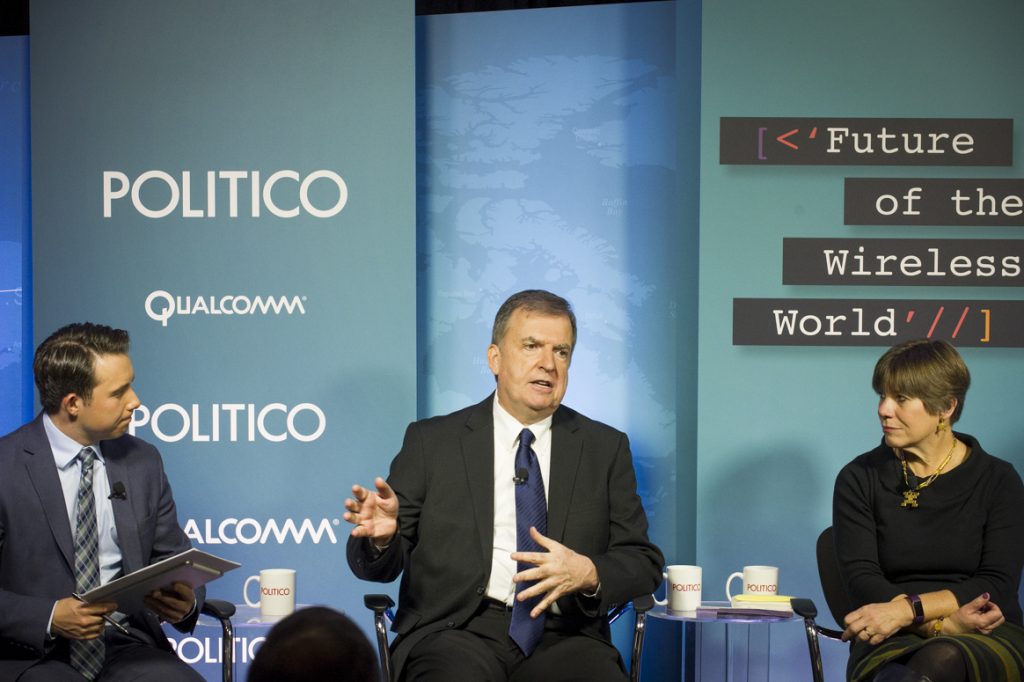I was pleased to participate in this March 7 event presented by Politico and Qualcomm. The event page with video is here.
Archive for the ‘Qualcomm’ Category
Future of the wireless world: The move to 5G
Wednesday, March 8th, 2017FCC’s 5 GHz spectrum initiative could mean more and wider channels for IEEE 802.11ac
Thursday, January 10th, 2013FCC Chairman Julius Genachowski yesterday announced an initiative to make 195 MHz of more spectrum available for Wi-Fi in the 5 GHz band.
The last time more spectrum for Wi-Fi was made available in this range was in 2003, when an FCC increased the then 300 MHz bandwidth to 555 MHz. As the document in that last link shows, the 5 GHz band is not as neat as the 2.4 GHz band, with other services, such as radar, requiring protection. These coexistence issues will have to be looked at again.
Qualcomm outlines vision of 1000x mobile capacity increases
Wednesday, August 29th, 2012In the first of a series of webinars, Qualcomm today began reporting on the results of its “1000x Data Challenge,” an initiative to meet what it sees as the need, someday, to increase mobile capacity 1000-times. The webinar, conducted by Rasmus Hellberg, Qualcomm’s Senior Director of Technical Marketing, was an overview. He discussed spectrum, small cells, and other techniques to increase capacity. More-detailed webinars on each of these are forthcoming: spectrum initiatives on September 18, small cells and heterogeneous networks on October 18, and more efficient networks, applications, and devices on November 14. Today’s webinar should be posted tomorrow, and a white paper should appear in about a week.
In the Transition to 4G, Voice will Stay on 3G
Friday, October 15th, 2010Most cellular operators are beginning the transition from 3G technologies to 4G LTE. That will mainly be for high-speed data and not voice, support for which will come years later. Communications engineer Jim Murphy describes some of the networking issues that make voice impractical on LTE on day one. To his comments I’d add that the preferred LTE voice solution is VoIP on the IP Multimedia System (IMS) framework, which has had slow adoption in the mobile community.
Jim’s example is from the 3GPP family of technologies, of which LTE is part. Most 3GPP2 operators, such as Verizon Wireless, are also planning a migration to LTE. They migrate from a different family of technologies, those specified in 3GPP2 and which include cdma2000 developed largely by Qualcomm. In Verizon’s transition, high-speed data on cdma2000 networks, now provided by EV-DO, will migrate to LTE. Voice will stay on cdma2000 1x for several years. That’s not a problem, because that technology keeps improving. The latest version, called cdma2000 1x Advanced, has achieved a 50x increase in voice capacity over the predecessor IS-95 system launched in 1993.
Both 3GPP and 3GPP2 3G voice feature a soft-handover (make-before-break) scheme that allows for, essentially, a circuit-switched connection. Yes, you’ll be able to run Skype and other VoIP services on 4G LTE data networks, if you want. In terms of the total user experience, however, most will prefer the seamlessness of standards-based integrated voice capability.
VoIP is the future. For 4G voice, though, it’s just great in theory at this time.
